How To Stop Food Aggression In Dogs? (Smart Strategy)
Food aggression can sound like quite an intimidating problem to come up against. Any aggression can be hard to deal with because you’re trying to train and manage a behavior led by big emotions. Aggression is almost always linked to some kind of worry or fear and food aggression is no different.
If you’re able to catch it early on then food aggression can become a thing of the past but some dogs will need more long-term management to help them feel comfortable around their food.
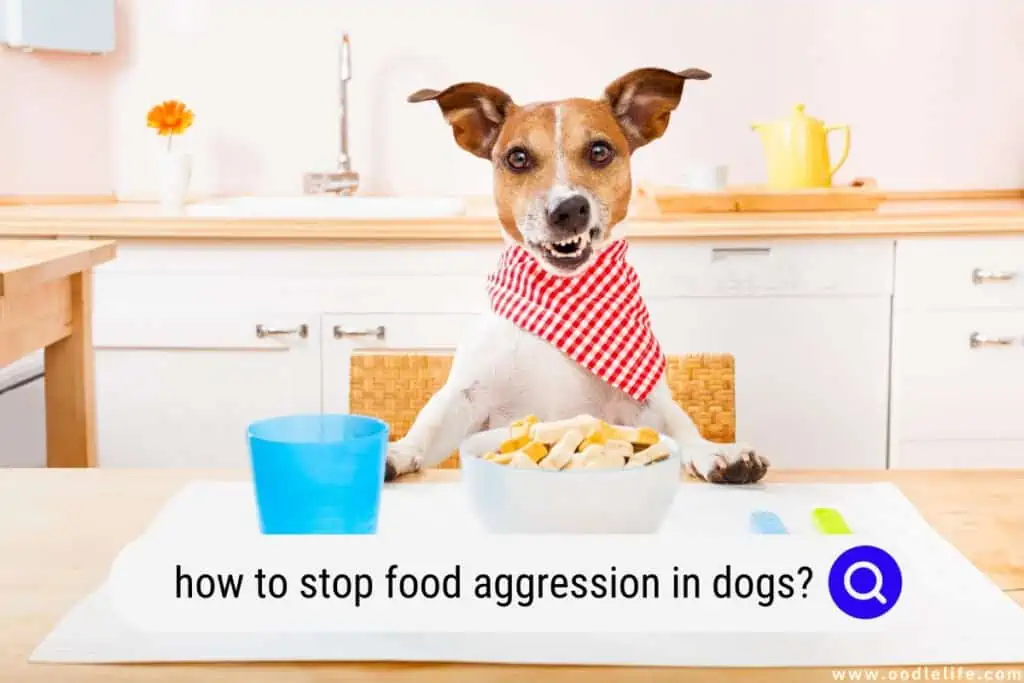
As humans, we learn pretty early on not to take things from other people. I would be understandably annoyed if I was eating a slice of pizza and someone walked past and just took it out of my hands. I might even be considered food aggressive if I was hungry enough.
Why is it then that you wouldn’t snatch someone else’s dinner but so many people preach the importance of being able to remove their dog’s bowl from them? We’re then surprised when dogs begin to get uncomfortable with anyone around their bowl.
The first tip to preventing and helping a dog with food aggression to feel safe around you and their food is to just not take it off them.
How Does Food Aggression Develop?
Food aggression can develop in a few different ways. The more research we do on how dogs develop and learn, the more we understand how vital genetics are in the role of a dog’s temperament. If a dog is bred from a line that has any issues with food guarding then it doesn’t automatically mean a puppy will be born with resource guarding issues but they may be more inclined to develop it.
Some puppies become very precious over their food early on when litters are fed together. They often have to muscle each other out of the way to gain access to their share of their mother’s milk or the weaning food they’re later given. The smaller puppies who are used to being pushed out of the way can become quite protective over their space when they’re eating.
Later in life, as they mature, if dogs learn that their resources aren’t safe and can be taken away from them they will become increasingly protective around them. Even if children in the home are picking up their bones or empty food bowls without knowing, it can cause conflict in your dog.
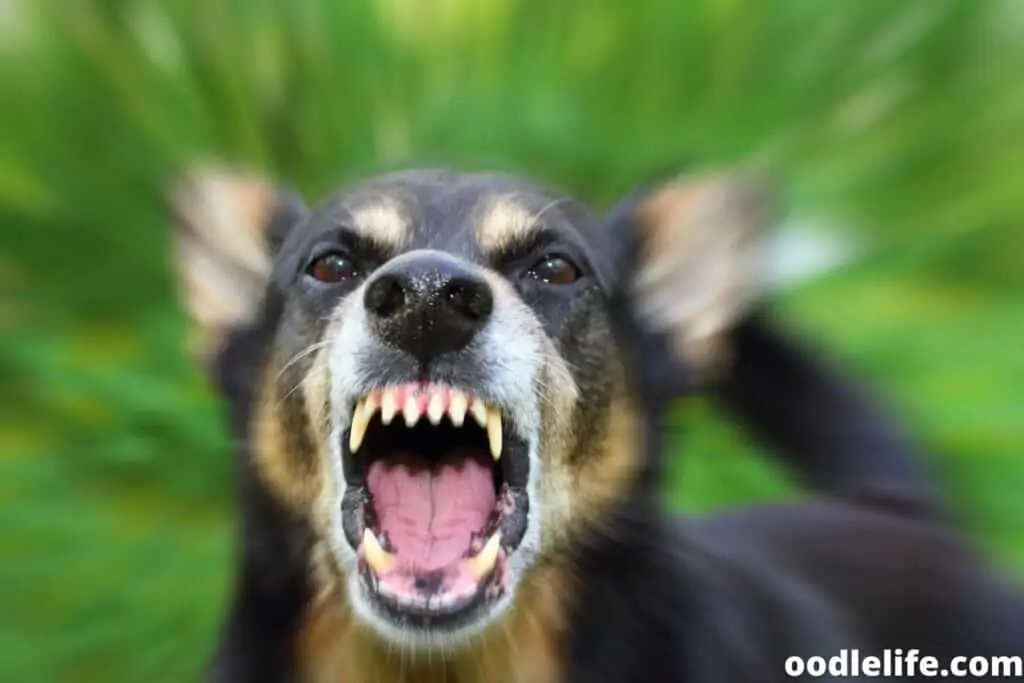
Can Dogs Get Food Aggression At Any Age?
While it is much more likely for your dog to develop food aggression while they are young and their minds and personalities are developing, it can happen at any age.
Having an adult dog who starts to display signs of food aggression despite their environment not changing is quite rare. If nothing has changed both in your home and how you interact with your dog, getting them checked by their vet may be the next step to make sure the behavior change isn’t because they’re feeling unwell.
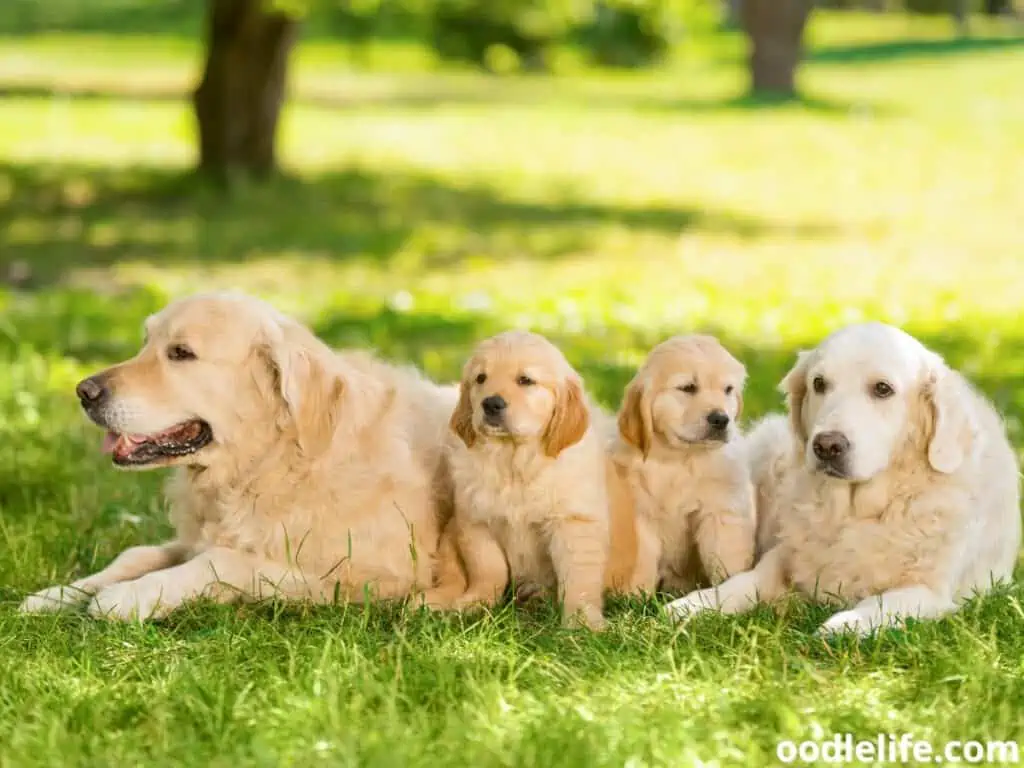
Signs Your Dog May Have Food Aggression
Being able to pick up on the body language and signals dogs present when they’re worried about people being near their food is important. Here’s a list of signals to look out for starting from the most subtle to the more obvious ones.
- Ears flattening
- Body posture shrinking lower
- Flashing the whites of their eyes (sclera)
- Eating faster
- Stopping eating
- Hard staring
- Showing their teeth
- Growling
- Lunging and snapping
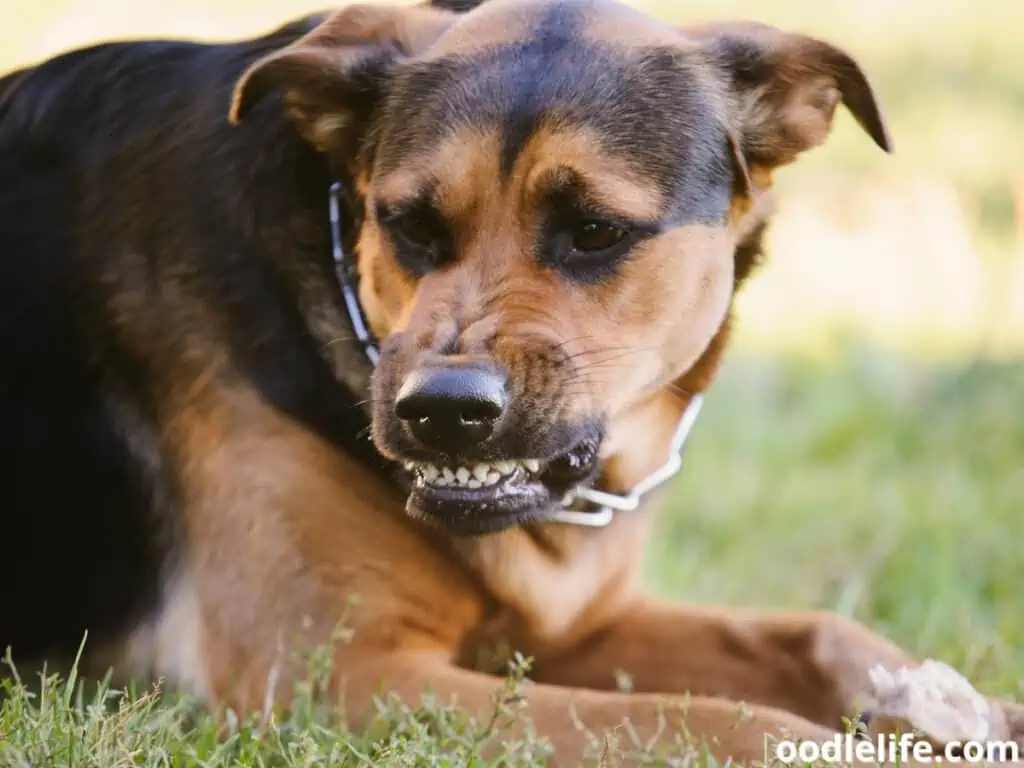
Are Some Dogs More Likely To Be Food Aggressive Than Others?
No evidence tells us that any breeds of dogs are more likely to show food aggression compared to others. Saying that, food aggression is linked to anxiety and defensive behavior so if we consider this, we can assume that dogs who are prone to being anxious may also be prone to behaving more anxiously around their resources like food.
Breeds of dogs like working Spaniels and high drive dogs like Border Collies are prone to being more sensitive. Anyone who has owned a Border Collie puppy can attest to how sensitive they are. One negative experience with a dog can make them hold onto that experience and take a dislike to other dogs during their socialization period.
Breeds such as Collies who take longer to recover from stress are more inclined to become food aggressive.
Compare them to Labradors who love food and yet recover very quickly from social stresses and you have a breed that is not typically associated with food aggression.
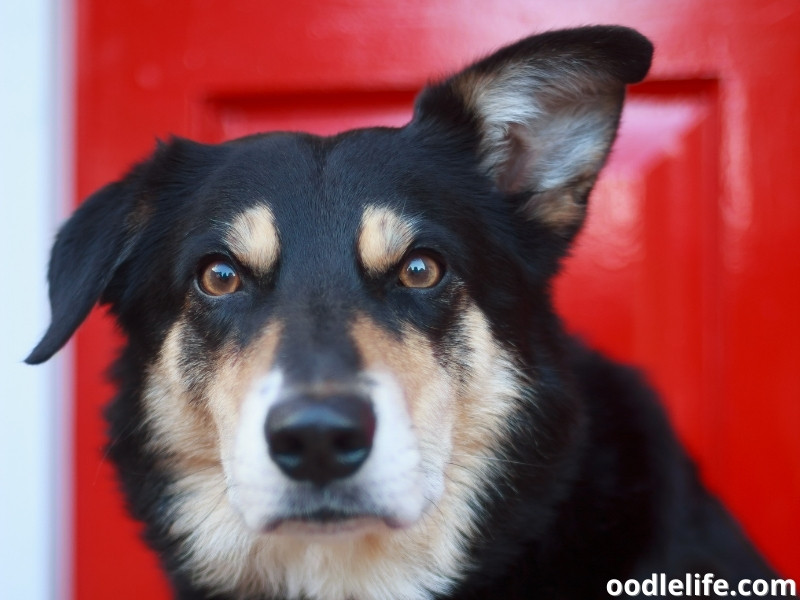
Can I Prevent Food Aggression?
Food aggression can be prevented in several ways. The first and most important step is to never expect to be able to remove anything your dog has from them just because you want to. There are going to be situations when your dog picks something up they shouldn’t and you might need to get this off them but when your dog is eating, their food should never be removed from them.
If you never introduce conflict around their food bowl or their chews and treats then they will never develop the anxiety that causes them to want to protect their food.
Dogs should be able to eat their meal in peace and without being disturbed. If your dog picks up any food that you need to remove from them, teaching them to swap with you can help in these situations. If they know the word ‘treat’ means they get something super high value like chicken or cheese, they’re far more likely to drop anything valuable they have.
Of course, it is outright bribery but I would rather bribe a chocolate bar out of my dog’s mouth instead of risk causing issues around food items by trying to wrestle it off him.
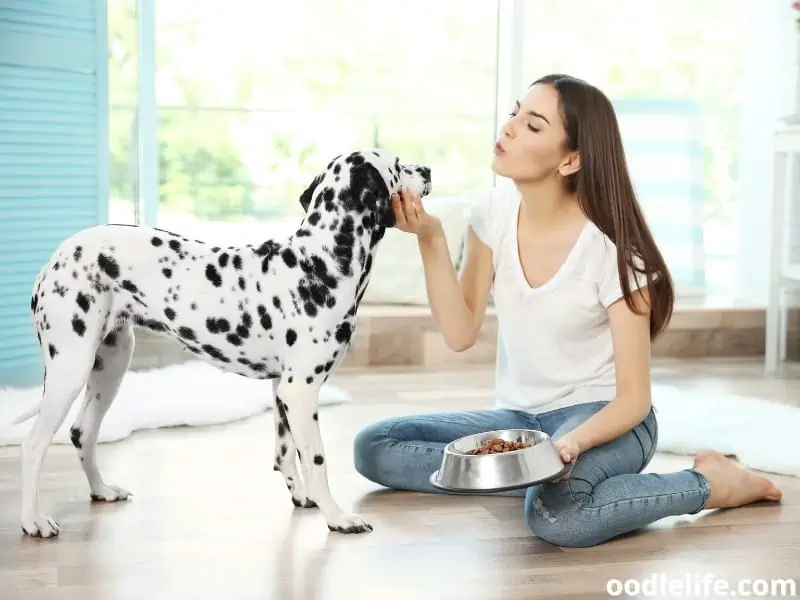
How Do I Stop My Dog From Being Aggressive Around Food?
Stopping a dog from being aggressive around food needs a two-pronged approach. Whenever you’re training an undesired behavior out of a dog, you need to first manage how much they’re able to practice that behavior. Simply put, the less your dog does something, the less they’re going to do it in the future.
The other side of changing a dog’s behavior relies on training. In the case of food aggression that means changing your dog’s emotional response to you being around their precious food items.
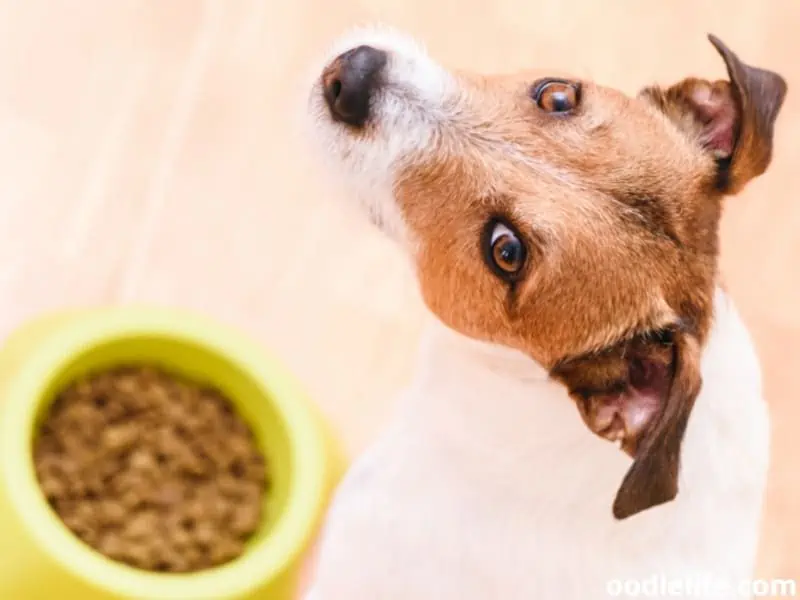
Management
A dog who is fearful around its food should be fed in a secluded area with no footfall. This means they shouldn’t have their dish in the middle of the kitchen with everyone walking around them. Depending on the severity they might just need a quiet corner of the room while others may need their own room or may even feel safer eating outside.
A dog who is possessive over their food should never have any food items removed from them to prevent the behavior from getting any worse. As far as dogs are concerned, if they have something then it belongs to them.
If a dog is also protective of their bones and chews then they may need to be managed around these too. Again, depending on the severity this could mean they only get these items when they are alone and can consume them safely or for a short period. These items may need to be removed altogether and replaced with treats they’re able to finish in one sitting.
Leaving bones or long-lasting chews around the house could just cause an excess of conflict.
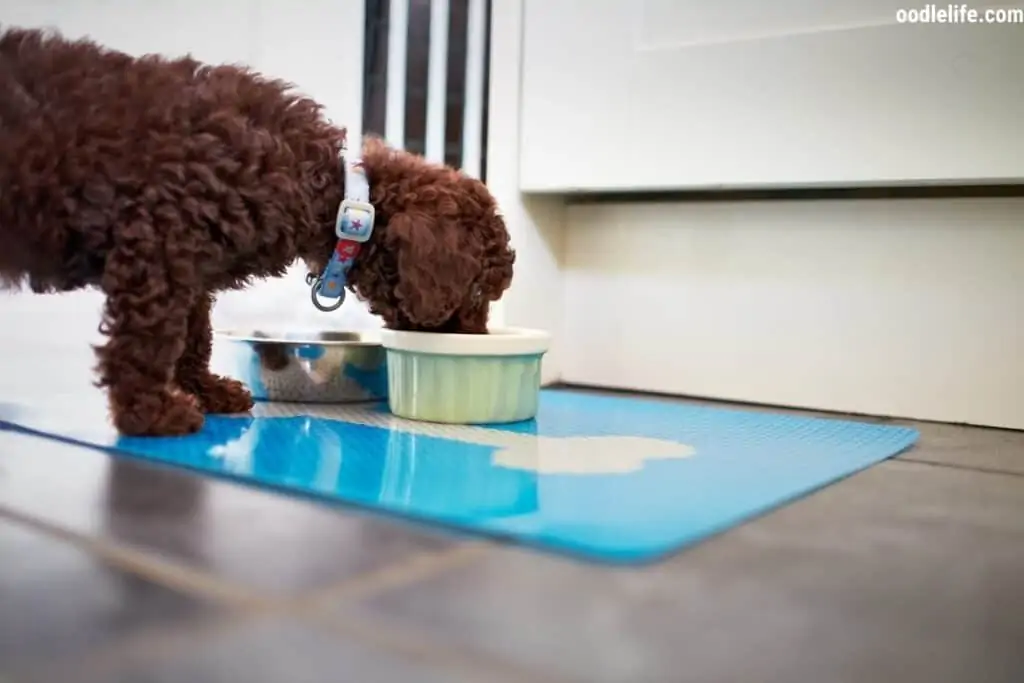
Training
Changing the emotion around you and being in the same room with your dog while they eat requires very little effort on your part except for patience. The goal is simply to make your dog less worried about you being around them while they eat.
First, you need to work out their threshold which just means finding the distance your dog is happy for you to be at while they eat. You’ll need to be armed with something much more valuable than the meal they’re eating like freshly cooked chicken or whatever your dog’s favorite treat is. While they eat, occasionally throw a bonus, extra tasty treat towards their bowl.
If your dog stops to eat it the treat and then continues to eat the rest of their meal then that’s exactly what you’re looking for. You’ve successfully interrupted their meal with something positive instead of negative. You can continue doing this until your dog is comfortable with you moving in and out of the room they’re eating in.
If every time you enter you throw an extra treat their way, you should slowly start to see their body language change.
Your dog should go from being apprehensive of your approach to a wagging tail and excited to see you come into their space because they get an extra treat. You’re starting to change how they feel about your approach. Once they’re consistently happy with your approach, you can vary when you reward them so they gradually learn not to expect it every time.
Eventually just enjoy you entering the room when they’re eating, even if there’s no extra treat.
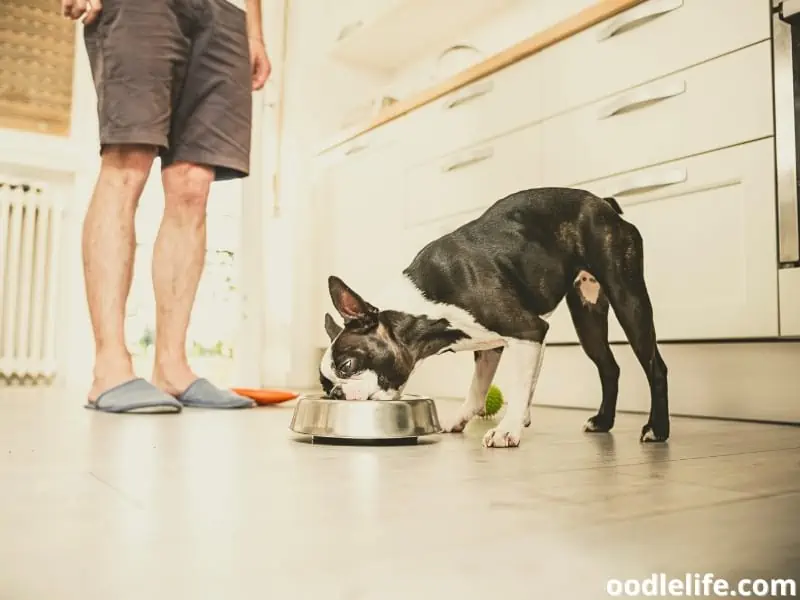
Conclusion
The most important thing to remember if your dog struggles with food aggression is that it’s entirely stemming from fear. If you can manage and change the way they feel around their food bowl then you can successfully train your dog out of the aggressive response to benign approached while they’re eating. We love our dogs but sometimes our language barrier and misinformation about training lead to these behaviors developing.
Like most situations, prevention is always the best cure but dogs with food aggression can live happy normal lives even if they need some help along the way.